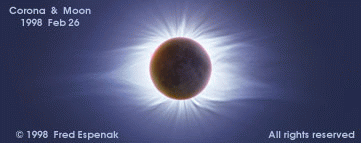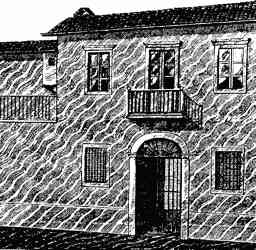
This photo was taken during the 1998 eclipse in Guadeloupe. You can see many images of the crescent Sun. The gaps in the tree's foliage act like tiny pinhole cameras. Each one focusses an image of the Sun onto the car.
Copyright Peter Gallagher
Well, I've told you about the Baily's Beads, so what else is there to see?
During the first moments of totality, the Moon begins to blockout the Sun's disc. It looks as if a 'bite' has been taken from the edge of the Sun. It has to be the most awesome sight I've ever seen.

This photo was taken during the 1998 eclipse in Guadeloupe. You can see many images of the crescent Sun. The gaps in the tree's foliage act like tiny pinhole cameras. Each one focusses an image of the Sun onto the car.
Copyright Peter Gallagher
After this, more and more of the Sun's photosphere (the visible surface of the Sun) is 'eaten' away until the total eclipse. Then the Moon completely blocks out the Sun's surface.

During 'totality' the Sun's corona can be seen really clearly. The total eclipse then only lasts for 2 or 3 minutes. [click on the image to see a movie of a real total Solar eclipse.]
Copyright Fred Espenak

|
Another really cool effect which occurs just before an eclipse is shadow bands. These are parallel light and dark bands moving across the ground. They are caused by air moving in our atmosphere. You can see them best on an open floor or wall. They give the world around a really eerie appearance. I can still remember the ones I saw just before the Guadeloupe eclipse. |
|
Reproduced from Science Frontiers #77 1991, copyright William R. Corliss |


|